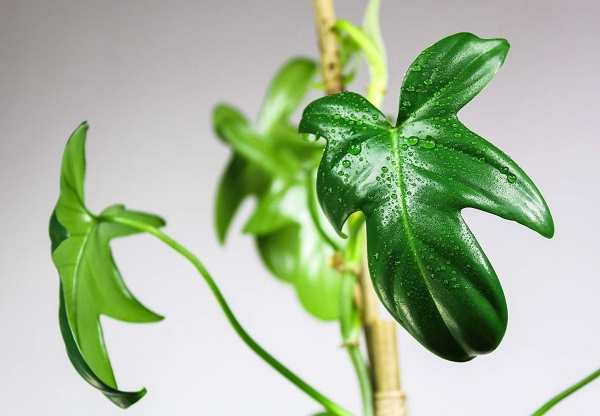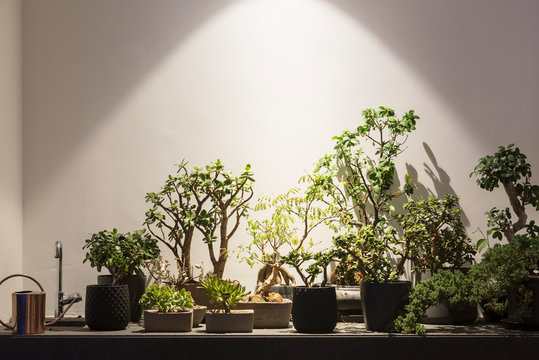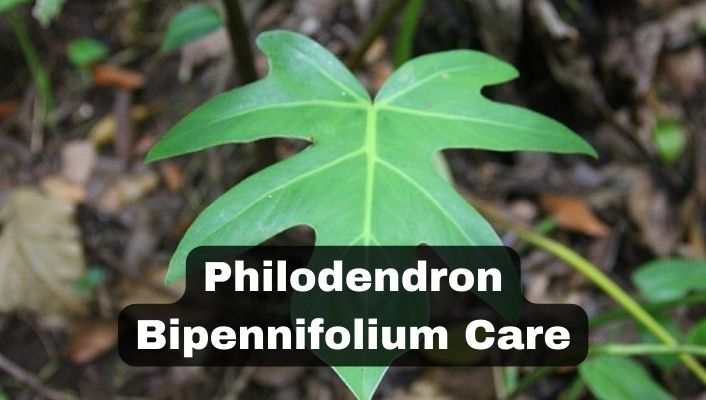Philodendron Bipennifolium is a really beautiful and exotic plant. This plant is odd-looking, and your visitors will surely turn heads to have a look at it. You’ll be appreciated by a person who knows plants.
Post Contents
- Philodendron Bipennifolium Information:
- Philodendron Bipennifolium Facts:
- More Knowledge about Philodendron Bipennifolium:
- Philodendron Bipennifolium Care and Maintenance:
- Best Soil Mixture:
- Water Requirements:
- Ideal Lighting Preferences:
- Humidity & Temperature:
- Fertilizer:
- Propagation:
- Philodendron Bipennifolium Diseases & Pests:
- Frequently Asked Questions:
- Conclusion:
- Author
Philodendron Bipennifolium Information:
Find key information about Philodendron Bipennifolium, including its name, family, native region, and care essentials.
| Information | Description |
|---|---|
| Common Name | Philodendron Bipennifolium |
| Scientific Name | Philodendron bipennifolium |
| Family | Araceae |
| Native to | Central and South America |
| Growth Habit | Climbing vine |
| Leaf Shape | Large, deeply lobed |
| Leaf Color | Dark green |
| Light | Bright, indirect light |
| Watering | Allow soil to partially dry between waterings |
| Humidity | Prefers moderate to high humidity |
| Temperature | Average room temperatures (18-24°C) |
Philodendron Bipennifolium Facts:
Who isn’t a hobbyist will surely ask about this plant? It’s a masterpiece with leaves that sometimes resemble violins, a big green butterfly or a horse. The Philodendron Bipennifolium is sure to keep your guests mesmerized.
Another fact is that this plant is very rare, and you might think it would be difficult to care for it.
You’ll be surprised to know that Philodendron Bipennifolium is a tropical plant and if you have previously dealt with them. Then caring for this exotic beauty will be easy.
This tropical beauty is commonly known as Fiddleleaf or Horsehead Philodendron. These names are given to it due to its uncommon leaf shapes.
If you have other houseplants and want this in your collection, remember that it just needs normal plant care. Keep a routine of care and maintenance if you want to see your Bipennifolium healthy.
We have divided the article into the following points so that you can go through all the desired information you are looking for. Let’s get right into it:
More Knowledge about Philodendron Bipennifolium:
If you are planning to have this plant or have it already, these facts will amaze you. The Fiddleleaf has really beautiful glossy green leaves that have a leather-like texture.
The origin of this plant is Argentina and Brazil. This plant has a great quality of wrapping itself around rainforest trees as it grows. The stem is quite skinny, and it has aerial roots. It resembles a vine.

Use a moss pole, and you can hang it with it. Use pots or baskets for this plant. This way, you will create a steamy environment for the plant to thrive. The best part is that caring for this exotic beauty is easy, and the following parts will help you a lot.
Related Plant: Philodendron Pedatum Care & Growing (Ultimate Guide)
Philodendron Bipennifolium Care and Maintenance:
The Philodendron species are tropical, and they thrive a lot in warm and humid temperatures. Always remember that this plant declines very much due to cold weather.
Besides all this, you should have a large container that can hold its roots. Plus, you must mimic its natural habitat in terms of soil and environment. Following are some requirements to help your Horsehead Philodendron flourish indoors.
Best Soil Mixture:
Always remember that a soil mix that is well draining is best for the Fiddleleaf Philodendron. A soil that helps retain a required and adequate amount of water without causing root rot.
For best results, your soil should have a mixture of clay, sand, and silt. If you add sand, ensure that it is little over half of the ground. This will give perfect fertile soil.
Water Requirements:
The Philodendron Bipennifolium watering needs are essential. As the soil needs to stay moist but not waterlogged, you must ensure adequate water.
Remember that if the soil is filled with water, it will not let the soil stay airy, and oxygen will not reach the roots easily. This can lead to problems like root rot and root burn. Along with this, your leaves will become yellowed, and overall you will slow the plant growth.
We recommend waiting for the soil to dry completely, then watering it accurately. Not too much, not too less. Moreover, if you want to see your plant thriving, water it in a sink and drain all the excess water.
The summer watering routine should be normal; you should lessen watering in winter as plant growth is below average.
Ideal Lighting Preferences:
Your Horsehead will need sunlight but remember that it cannot bear direct sunlight because it will burn the foliage. Moreover, this can make the leaves turn yellow and start to have burn marks on them.
Please keep it in bright but indirect sunlight; then, the leaves will thrive and succeed in photosynthesis.

We recommend placing your plant in a window facing north or south that receives bright indirect light. You can use a light curtain against the window too. When planting it outdoors, make sure it is near a tree or a large plant. This way, it will be in the shade.
Humidity & Temperature:
You have to keep the temperature in the range that is between 70 degrees Fahrenheit to 80 degrees Fahrenheit (24C to 29C). The evening temperature should be between 65F to 70F (18C to 21C). The main thing to remember is that the Philodendron Bipennifolium can never handle cold and freezing temperatures.
Regarding the humidity requirements, this plant comes from rainforests, and it will require a room humidifier that will keep a high moisture level. Along with this, you can use the popular pebble tray method, and you can hang the plant in a basket and fill a tray below it with water.
Add water that does not cover the pebbles. Place your plant on the tray; as the water evaporates, it creates the moisture it needs. Refill the tray when it’s dry.
Fertilizer:
This plant has a great thing. It does not need a lot of fertilizing. You can do it often for beautification purposes.
Philodendron Bipennifolium can be fertilized about three times a year, or the plant’s health can indicate the need for fertilization. We recommend going for a slow-release fertilizer.
Always dilute the fertilizer and then spray it near the base of the plant. Along with this water, the plant provides moisture and spreads the fertilizer completely.
If you leave the fertilizer on its own, there are chances that the plant roots will burn or be damaged. Look for the composition of fertilizers if they have a high salt content, as it’s harmful.
Propagation:
There are two best ways to propagate Philodendron Bipennifolium propagation, and the first and most popular one is by stem cutting. And the second one is the air layering method, which is an excellent method to use. This plant can grow up to 3 feet to 7 feet.
Leaf size is between 10 inches to 18 inches in length. We recommend always propagating your plant in March. Keep on reading to learn both ways.
Related Post: Philodendron Billietiae Plant Care (Proven Guide & Tips)
Air Layering:
You have to cut the plant a bit for this excellent method. Use a sterilized knife cleaned with 70% isopropyl alcohol.
- The wound is required to stay open. You can use toothpicks for this.
- You have to get some sphagnum peat moss and make it a little moist so that it sticks to the cut made in the plant.
- A small string can tie the peat moss in place and cover it with plastic wrap, but not too tight as an airy environment is needed.
- Take care; after a couple of weeks, you’ll see the wound will root.
- When the root is about four inches long, you can cut it apart using a sterilized tool.
- Now you can easily plant this new root in the soil and grow a second one.
Stem Cutting:
For this method, you must find a perfect spot near a leaf that should be at least 2 to 4 inches long. Use sterilized tools for doing this as we did in the air layering.
After this, place the cutting in a warm and humid place for up to two weeks. This way, you will form root points that you can place in the soil by sticking your finger.
All you have to do is take the cutting, place it in the soil, and ensure it stays firmly there. If the stem doesn’t stay upright, you can give it the support of a mossy pole or natural straw.
Philodendron Bipennifolium Diseases & Pests:
There is a plus point when discussing pests; this plant does not attract many insects and pests. But this plant attracts some tiny soft-bodied insects, and they can harm your plant and are best to treat immediately.
You might have heard about the pest named brown scales. The Philodendron Bipennifoliumand is prone to this but guess what? It is easier to kill. These pests always attack the sap of the plant. You can use Neem oil to get rid of these pests. Use a sprayer and mist the oil all over the infected areas.
You can remove all the infected areas from the plant to treat any pest or infection. You can cut off infected leaves. Moreover, you can invest in a copper-based fungicide. Spray it on your plant but first, use a small part of the plant to test the plant’s reaction toward it.
Frequently Asked Questions:
Is Philodendron Bipennifolium a rare plant?
Yes! It is quite rare because of its tropical origin. Prices of Philodendron Bipennifolium can be high.
Where does Philodendron Bipennifolium come from?
The species of Philodendron comes from tropical areas of America.
Can we mist Philodendron Bipennifolium?
Yes, you can mist your plant, as misting provides a humid environment and, in return, helps it thrive.
Where can we buy Philodendron Bipennifolium?
If you want to buy the Philodendron Bipennifolium, you can find it available at many gardening stores or source it from a nursery. Moreover, it is available at online garden stores too.
Conclusion:
Before wrapping up the article completely, we will surely recommend getting this plant in your exotic collection.
Moreover, this plant is a head-turner, and you have learned about all the care and maintenance it needs. Your plant will thrive all year round.
We hope that you found this article helpful. We tried to cover up all the related information about the Philodendron Bipennifolium.
Read More Articles:
Philodendron Lemon Lime Care Guide (Tips to Grow Perfectly)

